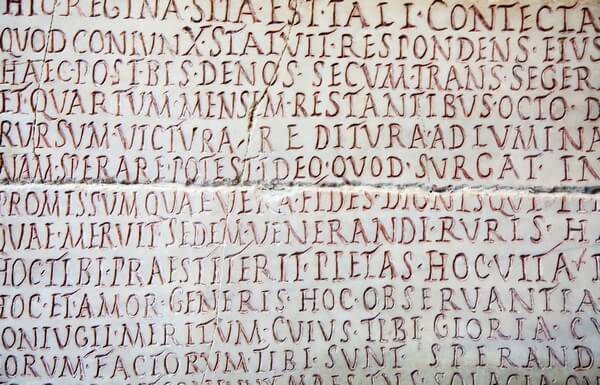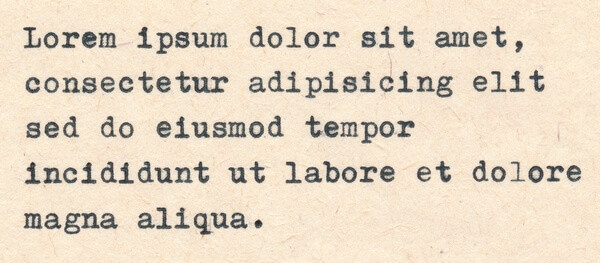Latin Translation and Interpreting
LEXIKA provides high quality translations promptly and at a reasonable price. Feel free to contact us with a request for any Latin text to be translated. We deliver reliable translations of identity and official documents from Latin into English, German and other European and world languages.
We most frequently translate Latin official documents, diplomas and technical texts.

5 reasons to arrange translations with us
- High quality translation is our main focus.
- We provide tailor-made translations to suit your needs.
- We respect the agreed on delivery deadlines.
- We work with professional translators and the texts are always translated by an expert in the given field.
- We use modern tools to provide you with translations that are even more effective and meet higher quality standards.
We provide certified as well as regular translations in numerous specializations such as economics, technology, law, and medicine.
Being an interpreting and translation service provider with more than 20 years of experience, we have already successfully carried out tens of thousands of translation projects for numerous local and foreign companies.
The high quality of our services can be best demonstrated by the references provided by our customers for whom we have become a preferred provider of translations from English, German and other world and European languages. They mainly appreciate our professionalism, compliance with the agreed conditions and the fast delivery of translations.
How do we do it?
Specialist translators
At LEXIKA, we work with translators who specialise in more than 120 areas of expertise. We carefully analyse every text and subsequently select the most suitable linguist from among our translators. During the selection process, we focus mainly on their language and terminology skills.
International standards
Since 2009, the quality management system of LEXIKA has been annually audited by TÜV SÜD – a renowned audit company which verifies whether we fulfil the strict requirements of ISO 9001. Compliance with the said standard guarantees systematic processing of all requirements as well as a high quality of services and delivered translations. We always recommend you have your text translated in compliance with ISO 17100 so as to meet the high quality requirements placed on translators, reviewers, and the entire translation process.
Modern technologies
Modern software translation tools used by our translators at work positively influence the quality and efficiency of the translation process. Besides other things, they bring the advantage of ensuring consistently used terminology and the possibility of reducing your translation costs.
Quality assurance
Although the latest software tools are used in the process of quality assurance, we never forget to ensure that each translation is checked by our expert reviewer’s eye. They verify for instance the correct use of the terminology provided by the customer, check whether the translation, spelling correction, and proofreading were correctly carried out and check the graphic layout of the translation.
Interested in using our services?
Leave us a message with your requirements and we’ll get back to you
A dead language? Not really.
Latin is considered to be a dead language. A dead language is a language that is no longer the native language of any community of speakers. Even if the glory days of Latin are over, the word 'dead' sounds slightly exaggerated.
Latin still lives on for instance in the Romance languages that evolved from it as well as in various modern sciences. For example law, biology or medicine have not dispensed with it. Latin was the language of intellectuals for many centuries. At the beginning of the 20th century, it was still considered, often along with Greek, to be the general foundation of education. Latin is still used in the city of Vatican, and even the instructions on the cash machines are in Latin there. In the present day, Latin still remains a timeless and distinguished language and knowing several words or some classic quotes can be quite useful. If, however, somebody tries too hard to impress you with their Latin, just tell them: Quidquid latine dictum sit, altum videtur (Anything said in Latin sounds profound).

The lingua franca of the ancient world
Latin developed over several phases that are closely connected with Roman expansionism and the expansionism of ancient Rome. Around 265 BC, the Romans conquered Greek colonies, which enriched their language with Greek words. Old Latin was also influenced by Etruscan and Oscan. The language flourished greatly in the 1st century BC. It was a time of blossoming literature and vocabulary and the time when Latin was purified by separating from vernacular elements. It is also the period in which important works written by renowned authors such as Cicero, Caesar, Varro and others date back to. Roman power expanded and so did Classical Latin, which became the lingua franca of the ancient world.
We must not forget about Vernacular Latin, which coexisted alongside Classical Latin and both language varieties influenced each other. It is from the colloquial language (sermo vulgaris) that the Romance languages gradually developed around the 9th century. The influence of Latin declined after the fall of the Western Roman Empire, but Latin continued being used in the Middle Ages. With the advent of modern times and the effort to overcome the medieval decline, Latin restored its position as an important language. It is the Latin of this period that is still used by the Roman Catholic Church today.

Lorem ipsum
You have perhaps noticed the title and said to yourself that you have already seen it even though you do not know its meaning. Lorem ipsum is a pseudo-Latin text used for the graphic testing of layouts of web pages, magazines, and other print media. Since it makes no sense and thus doesn’t tempt you to read it, it doesn’t distract your attention from the graphic elements and the layout.
We will finish now with a crash course in Latin. Salve – Hello, Nullo intellego – I do not understand, Quaesō – Please, Gratias vobis ago – Thank you, Adiuva! – Help!, Bene sapiat – Enjoy your meal, Ubi sunt latrinae? – Where are the toilets? One never knows when these phrases may come in handy.
